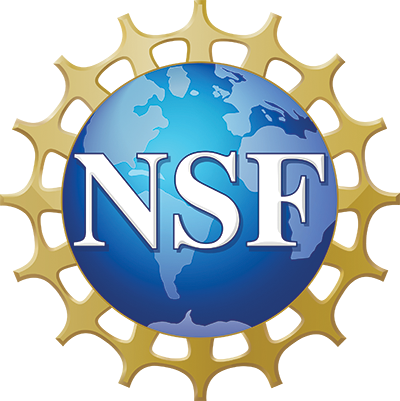NSF CI Compass invites you to join us for our next webinar, featuring Amanda French, Research Organization Registry, and Ted Habermann, Metadata Game Changers, presenting "Beyond Acknowledgements: Identifying NSF Facilities in Published Research with Machine-Actionable Identifiers."
This webinar will be held on Wednesday, February 26, 2025, at 10 a.m. PST / 11 a.m. MT / 12 p.m. CT / 1 p.m. EST.
This is a free event.
About the Webinar:
NSF Facilities play many important roles in the research ecosystem and tracking their contributions is a difficult on-going task. Historically, facilities have relied on acknowledgements in scientific papers and other research outputs to identify usage. Guidance for those acknowledgements is featured on many facility websites:
"The National Ecological Observatory Network is a program sponsored by the U.S. National Science Foundation and operated under cooperative agreement by Battelle. This material is based in part upon work supported by the U.S. National Science Foundation through the NEON Program."
or
"This material is based on [data, equipment, and/or engineering] services provided by the UNAVCO Facility with support from the National Science Foundation (NSF) and National Aeronautics and Space Administration (NASA) under NSF Cooperative Agreement No. EAR-0735156."
This approach has been effective for readers of the literature but, as is also the case with author affiliations, there are challenges migrating into the machine-actionable world of connected authors, organizations, funders, and a growing variety of research results. The Research Organization Registry (ROR) is a global, community-led registry of open persistent identifiers for research organizations. ROR makes it easy for anyone or any system to disambiguate institution names and connect research organizations to researchers and research outputs. RORs, as the identifiers are called, are the critical piece connecting all kinds of research organizations into the growing research knowledge graph.
How can NSF facilities take advantage of these identifiers?
We will address this question from two points of view: Amanda French, the ROR Technical Community Manager, will provide details about ROR, the ROR community and ROR integrations while Ted Habermann, the CTO of Metadata Game Changers will take a look at early adopters of ROR in the facility community.
Speaker Bios
Dr. Ted Habermann

Ted worked for many years improving data management, access, interoperability, and documentation at NOAA’s NCEI and as Director of Earth Science at The HDF Group. He created Metadata Game Changers with Erin Robinson to help organizations improve metadata for data discovery, access, and understanding. Projects include advising U.S. Geological Survey, DataCite, USAID, and UCAR on metadata systems, persistent identifiers, and standards, working with NSF, Dryad, CEDAR, and CHORUS on metadata evaluation, re-curation and identifiers, team building games, and working with infrastructure providers to improve utilization of metadata for publications, software, datasets and research objects. Ted’s blog describes many of these projects.
Dr. Amanda French

Amanda is the Technical Community Manager for the Research Organization Registry (ROR) at Crossref,
where she works to promote the adoption of ROR to make information about research organizations cleaner and easier to exchange between systems. Dr. French is a well-known project director and community manager in digital humanities and scholarly communication. During the first year of the pandemic, she served as Community Lead at The COVID Tracking Project at _The Atlantic_, working with more than 800 volunteers to collect and publish key COVID-19 data. Earlier, she managed the "Resilient Networks for Inclusive Digital Humanities" project at GWU Libraries, directed the Digital Research Services unit at Virginia Tech Libraries, and led the THATCamp unconference initiative at GMU's Roy Rosenzweig Center for History and New Media. She was also part of the initial cohort of CLIR postdoctoral fellows.






